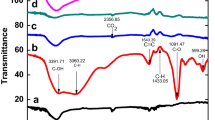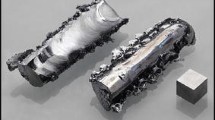Abstract
By Mössbauer spectroscopy, NAA and optical spectroscopy, the coloring and the firing technology of ancient Ru celadon were studied. Also, the relationship between Ru Kuan celadon from Qingliang Temple and Ru celadon from Zhanggongxiang was studied by PIXE. The glaze color of Ru celadon depends on the ratio of the structural iron ions, i.e. the Fe2+/Fe3+ ratio. Further, it depends on the firing conditions. As the Fe2+/Fe3+ ratio gradually increases, the glaze color of Ru celadon will gradually change from pea green to sky green. All the Ru celadons were fired in a reducing atmosphere. The sky green Ru celadon was fired in the most reducing atmosphere and at the highest temperature, the powder green in a more reducing atmosphere and at a lower temperature and the pea green in a lightly reducing atmosphere and at the lowest temperature. The PIXE experimental results showed that Ru Kuan celadon from Qingliang Temple and Ru celadon from Zhanggongxiang were incompletely identical in the recipe of glaze and they could be differentiated by the cluster analysis of the major element concentration of glaze.
Similar content being viewed by others
References
Feng, X. M., Chinese Ceramics, Shanghai Ancient Books Press, Shanghai, 1994, p. 340.
Cheng, H. S., He, W. Q., Tang, J. Y., Yang, F. J. and Wang, J. H., Nucl. Instr. Meth. B 118 (1996), 377.
Cheng, H. S., Zhang, Z. Q., Xia, H. N., Tang, J. Y. and Yang, F. J., Nucl. Instr. Meth. B 190 (2002), 488.
This standard reference sample is from National Experimental Analysis Center of Chinese Geological Ministry.
Chen, S. H., Gao, Z. Y., Hu, G. J. and Chen, X. D., Hyp. Interact. 91 (1994), 651.
Chen, S. H., Gao, Z. Y. and Sun, Z. T., Hyp. Interact. 91 (1994), 657.
Gao, Z. Y., Chen, S. H. and Chen, X. D., Hyp. Interact. 91 (1994), 669.
Zhang, B. and Gao, Z. Y., Hyp. Interact. 142 (2002), 593.
Gupix 96: The Guelph PIXE Program, Univerity of Guelph, Ontario, Canada, 1996.
Luo, H. J., Chinese Ancient Ceramics and Multivariate Statistical Analysis, Chinese Light Industry Publishing Company, Beijing, 1997, p. 120.
Author information
Authors and Affiliations
Corresponding author
Rights and permissions
About this article
Cite this article
Zhang, B., Liu, Y.L., Gao, Z.Y. et al. Mössbauer Spectroscopy, NAA and PIXE Study on Some Archeological Problems of Ancient Chinese Ru Celadon. Hyperfine Interact 163, 1–12 (2005). https://doi.org/10.1007/s10751-004-5649-y
Published:
Issue Date:
DOI: https://doi.org/10.1007/s10751-004-5649-y




